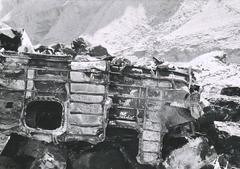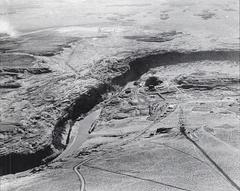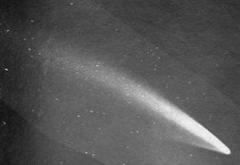
Museum of Northern Arizona and Marble Canyon: Visiting Hours, Tickets, and Travel Guide
Date: 04/07/2025
Introduction
Northern Arizona is a region where geological wonders and rich Indigenous cultures intersect, offering an unforgettable journey for explorers, historians, and nature lovers. Two must-see destinations that embody this intersection are the Museum of Northern Arizona (MNA) in Flagstaff and the awe-inspiring Marble Canyon, located at the eastern gateway of the Grand Canyon. Established in 1928, the Museum of Northern Arizona preserves and interprets the natural, archaeological, and cultural heritage of the Colorado Plateau, while Marble Canyon provides a dramatic, living showcase of the region’s geology and longstanding Indigenous connections (Museum of Northern Arizona; National Park Service Marble Canyon).
This guide delivers comprehensive details on visiting both sites—including hours, ticketing, accessibility, thematic highlights, and practical travel tips—to ensure a meaningful, respectful, and well-informed adventure through northern Arizona (Grand Canyon Trust).
Museum of Northern Arizona: History and Significance
Founding and Mission
The Museum of Northern Arizona was founded by Dr. Harold Colton, a zoologist, and Mary-Russell Ferrell Colton, an artist and educator, in 1928. Their vision was to create a repository for the region’s Native American artifacts and natural history, reflecting the unique cultural and geological heritage of the Colorado Plateau. Over the decades, the museum has expanded to offer leading educational programs, scholarly research, and community engagement (Museum of Northern Arizona; Grand Canyon Trust).
Collections and Exhibits
Native American Heritage
The museum houses one of the Southwest’s premier collections of Navajo, Hopi, Zuni, and other tribal artifacts. Highlights include pottery, textiles, jewelry, and ceremonial objects—many of which are masterworks of Indigenous artistry. These objects contextualize enduring cultural traditions and spiritual connections to the Colorado Plateau.
Geology and Natural History
MNA’s geology galleries feature interactive displays and specimens that illustrate the region’s evolution over millions of years. Dioramas and hands-on exhibits explain the formation of iconic landmarks, including the Grand Canyon and Marble Canyon, focusing on processes such as erosion, volcanic activity, and sedimentation.
Archaeology and Ethnology
The Archaeology Gallery presents tools, pottery, and petroglyphs from ancient habitation sites, while the Ethnology Gallery delves into Indigenous daily life, beliefs, and artistic expression. These exhibits highlight the resilience and adaptability of the Colorado Plateau’s original peoples.
Art and Rotating Exhibitions
Rotating exhibitions in the Babbitt Gallery and other spaces showcase the art and creative legacy of the region—both historical and contemporary. These displays reveal the interplay between landscape, culture, and artistic inspiration.
Visiting the Museum of Northern Arizona
Location and Access
- Address: 3101 N. Fort Valley Rd., Flagstaff, AZ 86001
- Directions: Three miles north of downtown Flagstaff via U.S. Highway 180.
Hours and Ticket Information
- Hours: Open daily, 10:00 a.m. – 5:00 p.m. (as of July 2025; confirm on the official website)
- Admission: $12 adults; $10 seniors, students, and youth (6–17); children 5 and under free; members free (Museum of Northern Arizona Tickets)
- Purchase: Tickets available online or at the entrance; memberships offer additional benefits.
Facilities and Amenities
- Bookstore & Gift Shop: Features books, Native American crafts, and souvenirs.
- Café: Light snacks and beverages.
- Discovery Room: Interactive learning space for families.
- Nature Trails: Explore the museum’s 200-acre campus and view local flora and fauna.
- Parking: Free, with accessible spaces for RVs and buses.
Accessibility
- Fully wheelchair-accessible entrances, galleries, and restrooms.
- Service animals welcome.
- Contact the museum in advance for specific accommodation needs (Accessibility Information).
Visitor Tips
- Best Time: Spring and fall for mild weather; early mornings or weekdays for fewer crowds.
- Duration: Plan for 2-3 hours, particularly if attending a guided tour or special event.
- Photography: Non-flash photography permitted for personal use unless otherwise posted.
- Guided Tours: Expert-led tours available; check the museum calendar for times.
- Respect Protocols: Honor posted guidelines, especially regarding sacred or sensitive exhibits.
Marble Canyon: Gateway to the Grand Canyon
Introduction
Marble Canyon marks the eastern entrance to the Grand Canyon and is celebrated for its striking limestone cliffs, prehistoric sites, and ecological diversity. Deeply significant to the Navajo (Diné), Hopi, and other Indigenous nations, the canyon is both a natural wonder and a living cultural landscape (National Park Service Marble Canyon).
Historical and Cultural Context
- Archaeology: Marble Canyon is the site of ancient split-twig figurines, granaries, and artifacts dating back over 4,000 years. The region’s archaeological finds, including 12,000-year-old animal remains, are featured in MNA’s paleontology and archaeology collections (Audiala).
- Indigenous Significance: The canyon is sacred land for the Navajo and Hopi, with ongoing spiritual and ceremonial importance. MNA collaborates with Native communities to curate exhibits and annual events, such as the Navajo and Hopi Festivals of Arts and Culture (Museum of Northern Arizona Events).
Geology and Ecology
- Geology: Marble Canyon’s dramatic rock strata are explained in detail at MNA’s geology wing, providing context for the formations visitors see in the canyon (Marble Canyon Geology).
- Biodiversity: The canyon is home to rare and endangered species; the museum’s natural history exhibits highlight efforts to preserve these unique habitats (Arizona Important Bird Areas).
Visiting Marble Canyon: Hours, Tickets, and Tips
- Hours: Marble Canyon is open year-round. Visitor centers typically operate 8:00 a.m. – 5:00 p.m.; check NPS updates.
- Fees: Entry is included in the Grand Canyon National Park fee ($35 per vehicle for 7 days); America the Beautiful passes accepted.
- Access: About 90 miles (1.5–2 hours) north of Flagstaff via US-89A and AZ-89.
- Guided Tours: Ranger-led hikes, river trips, and interpretive programs available (Visitor Information).
- Accessibility: Many viewpoints/walkways are accessible, but some trails are rugged.
- Nearby: Visit Navajo Bridge, Lees Ferry, and the Marble Canyon Lodge. The area is excellent for river rafting, hiking, and photography.
Integrating Your Experience: Museum and Canyon
Thematic Connections
- Geology: Begin at MNA to understand the forces that shaped Marble Canyon, then witness those features in person.
- Cultural History: MNA’s exhibits on Indigenous cultures amplify the spiritual and historical resonance of sites like Navajo Bridge and Lees Ferry.
- Art and Inspiration: The museum’s art galleries provide an interpretive lens for the landscapes you’ll encounter at the canyon (Museum Exhibitions).
Sample Itinerary
- Day 1: Tour Museum of Northern Arizona in Flagstaff; attend a guided program or special exhibit.
- Day 2: Drive to Marble Canyon; explore Navajo Bridge, Lees Ferry, and take advantage of ranger programs or book a river trip.
Travel Logistics
- Distance: MNA is in Flagstaff, a well-connected hub; Marble Canyon is ~120 miles north.
- Season: Spring and fall offer the most comfortable conditions (Best Time to Visit).
- Lodging: Options in Flagstaff or at Marble Canyon Lodge/Lees Ferry Lodge (Lodging).
Responsible Tourism
- Cultural Respect: Honor Indigenous protocols and posted guidelines (Cultural Etiquette).
- Conservation: Follow Leave No Trace principles; support preservation by purchasing from local artisans and donating to MNA (Conservation Efforts).
- Sustainable Travel: Use refillable water bottles, carpool, and respect wildlife and habitats.
Frequently Asked Questions (FAQs)
Q: What are the Museum of Northern Arizona’s hours?
A: Open daily, 10 a.m. to 5 p.m.; verify on the official website.
Q: How much are tickets?
A: $12 adults; $10 seniors, students, youth; children 5 and under free.
Q: What are Marble Canyon’s hours and fees?
A: Public areas are open year-round; entry included with Grand Canyon National Park fee ($35 per vehicle for 7 days).
Q: Are both sites accessible for people with disabilities?
A: Yes, both offer accessible facilities; check ahead for specific accommodations.
Q: Are guided tours available?
A: Yes, both MNA and Marble Canyon offer tours and ranger programs; see the relevant websites for schedules.
Q: What else is nearby?
A: Explore Walnut Canyon National Monument, Sunset Crater Volcano National Monument, Wupatki National Monument, and downtown Flagstaff’s historical district.
Visuals and Interactive Media
- High-quality images of museum galleries, outdoor trails, and Marble Canyon vistas (with descriptive alt tags).
- Interactive maps and virtual tours available on MNA’s website and the National Park Service Marble Canyon page.
Conclusion & Call to Action
The Museum of Northern Arizona and Marble Canyon together offer a journey through time, culture, and nature—inviting you to experience the interconnected stories of the Colorado Plateau. Start your adventure at MNA to build a foundation of knowledge and respect, then immerse yourself in the dramatic landscapes and rich heritage of Marble Canyon.
Plan ahead using this guide and linked resources, respect cultural and environmental guidelines, and consider supporting ongoing preservation efforts. For additional tools, download the Audiala app for guided tours and real-time visitor updates. Follow us on social media for news, events, and inspiration for your northern Arizona travels.
We look forward to welcoming you to these iconic destinations—where every visit deepens your connection to the enduring spirit of the American Southwest.
Sources and Further Reading
- Museum of Northern Arizona: Visiting Hours, Tickets, and Exploring Flagstaff Historical Sites, 2025, Grand Canyon Trust
- Visiting Marble Canyon: Hours, Tickets, and Exploring Flagstaff’s Historical Sites, 2025, National Park Service
- Marble Canyon Visiting Hours and Tickets: Integrating the Museum of Northern Arizona Experience, 2025, Arizona Heritage Traveler
- Museum of Northern Arizona Visiting Hours, Tickets, and Visitor Tips for Exploring Flagstaff’s Cultural Gem, 2025, Museum of Northern Arizona
- Audiala, 2025, Marble Canyon Overview




